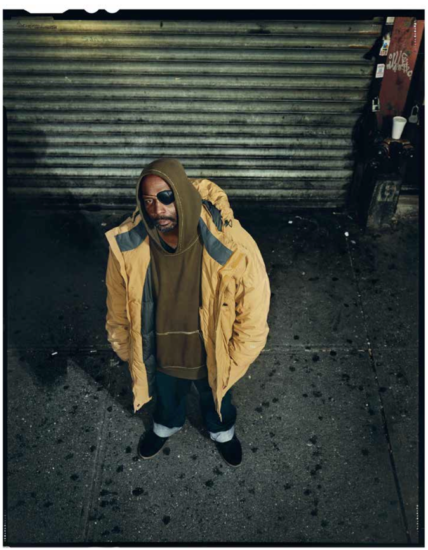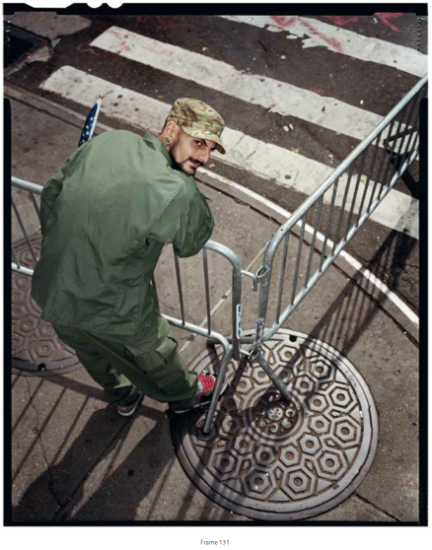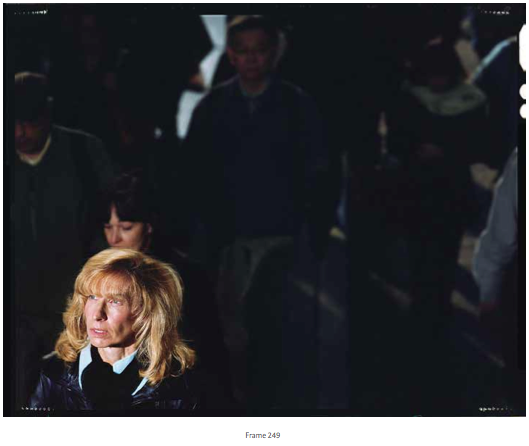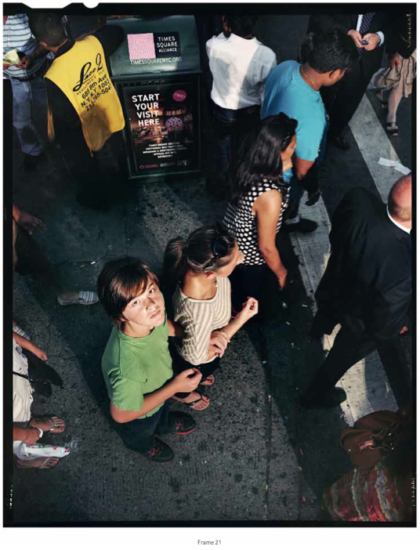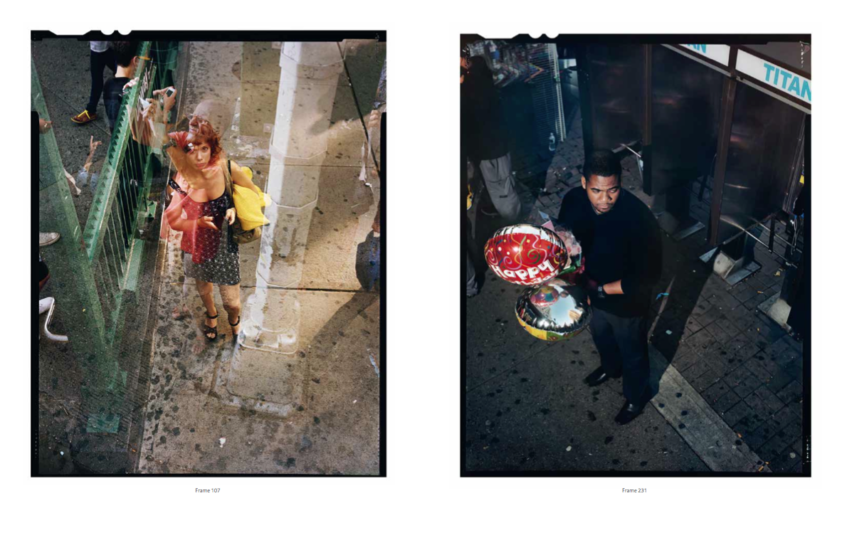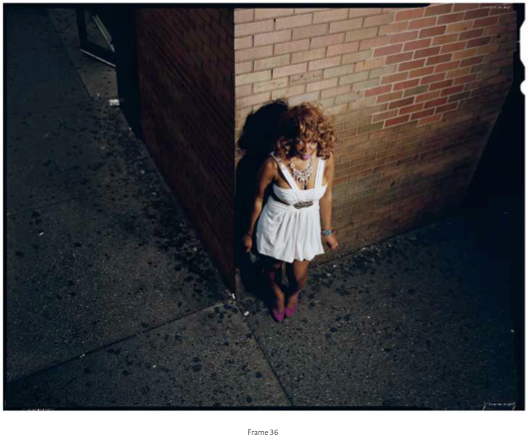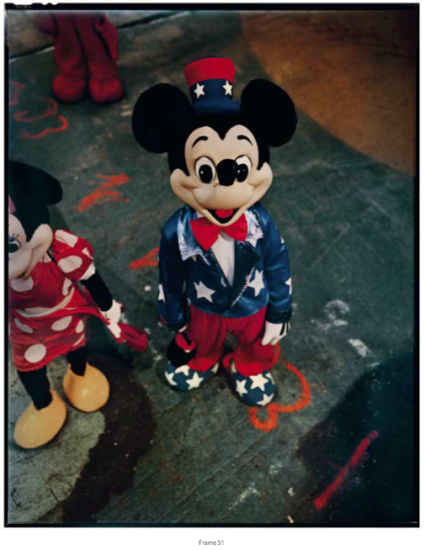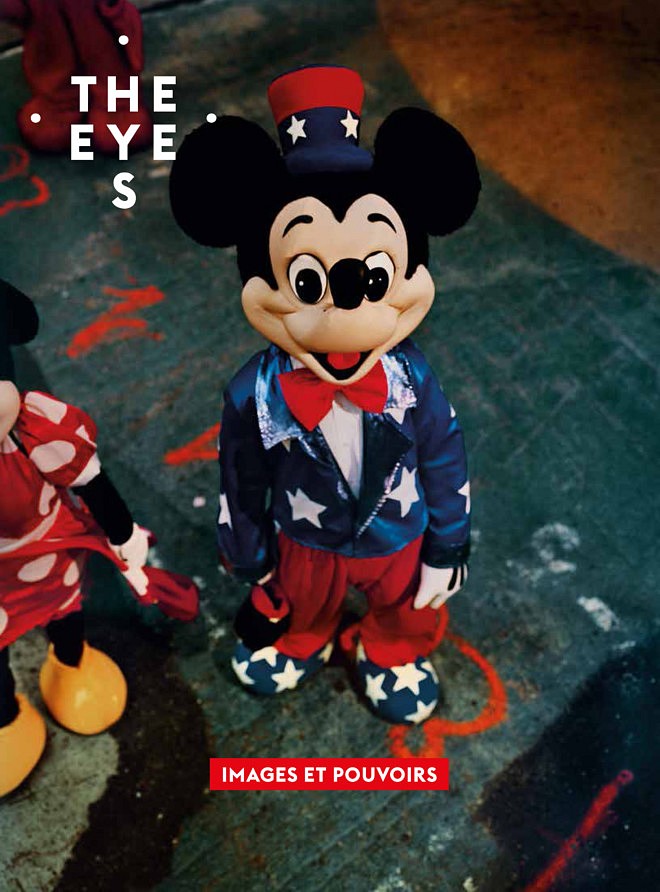Photographs in 3 acts
The Eyes #9
6/05/2019
Photographs in 3 Acts
Photographs by Ethan Levitas
Text from Marc Lenot
The work of Ethan Levitas is both deeply inscribed in the history of street photography, the city of New York being his hunting field, and marked by profound political awareness, sometimes verging on dissent. For “Photographs in 3 Acts”, he raised his 4×5 camera and placed it in front of the city’s surveillance cameras. By doing so, he disturbs the system. And by that gesture and the flashes he uses, he draws the attention of passers-by to the eye of the “protective” Big Brother.
Passing through the streets of New York or Paris, we no longer pay any real attention to the ubiquity of surveillance video cameras that capture every single one of our moves, gestures or distinctive features. We have come to accept the fact that we are constantly being filmed, located, spied on, tracked. And yet, one day, a photographer raises a large 4×5 camera at arm’s length to occult the field of vision of a surveillance camera. Even if Ethan Levitas were not taking photographs, even if his camera were but a sterile model, he would have made his point: suddenly, sheltered by his camera, we escape the surveillance device and acutely acknowledge that we have always been victims of it. Rather than being observed by the device, we are now looked at by the photographer. And his gaze over us creates another reality, redefining our position on the street and in the city.
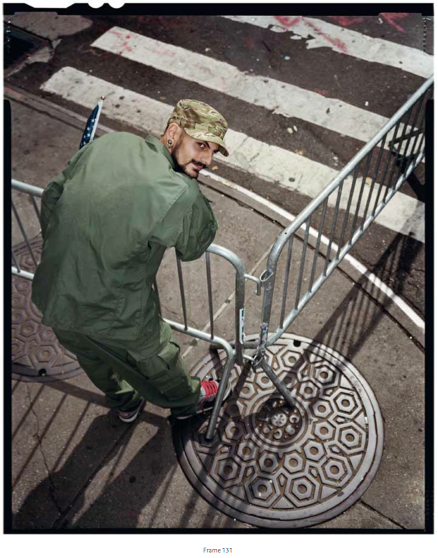 We passively accept being monitored as if this were normal, but the intrusion of the photographer forces us to become aware of the fact that everything we hoped to preserve in the private sphere has become public information – or rather, information appropriated by the authorities, the powers that be. This novel perception is already in itself a political act, since it redefines our relationship with the public space of the street. It is rather like the confusion caused by discovering everything that Google, Facebook and similar websites know about us: not enough for us to protest (how could we?), but enough to bother us and make us more cautious and suspicious.
We passively accept being monitored as if this were normal, but the intrusion of the photographer forces us to become aware of the fact that everything we hoped to preserve in the private sphere has become public information – or rather, information appropriated by the authorities, the powers that be. This novel perception is already in itself a political act, since it redefines our relationship with the public space of the street. It is rather like the confusion caused by discovering everything that Google, Facebook and similar websites know about us: not enough for us to protest (how could we?), but enough to bother us and make us more cautious and suspicious.
Ethan Levitas releases the shutter, of course: having reconfigured the field of vision by means of his camera, he will remove one image from it, stolen from the surveillance camera, which he will subsequently reposition elsewhere, on the walls of a gallery or in a book. This is the third act (after the elevation of the camera and the dislocation of surveillance) of these photographs in three acts (Photographs in 3 Acts is the title of the book), exposing passers-by with their head raised, surprised, often amused, sometimes unsettled or even troubled; and within them concern arises that might, in time, nurture rebellion.
Street photographers do not only record reality, because their sheer presence transforms it. Ethan Levitas’s photographic act goes even further by creating a fracture, a disorder, an awareness. By questioning the proper nature of the photographic gaze, he turns it into the piece of a game against the device, a diversion of its programs. What matters to him is not so much what the photography shows, but what it does, the ways in which it changes the relationships between people, how it enrolls passers-by in that game/combat, and how it becomes an actor in the city: photography is no longer a mere frame – it is an event, an encounter, a civil contract, to borrow from Ariella Azoulay’s concept.
BIOGRAPHY
Ethan Levitas was born in New York City in 1971. After completing his studies at Cornell University, he spent five years in Japan where he started working in photography.
He has since explored the implications of the photographic act as an intervention and photography as an event that defines the attributions of place, purpose and meaning.

